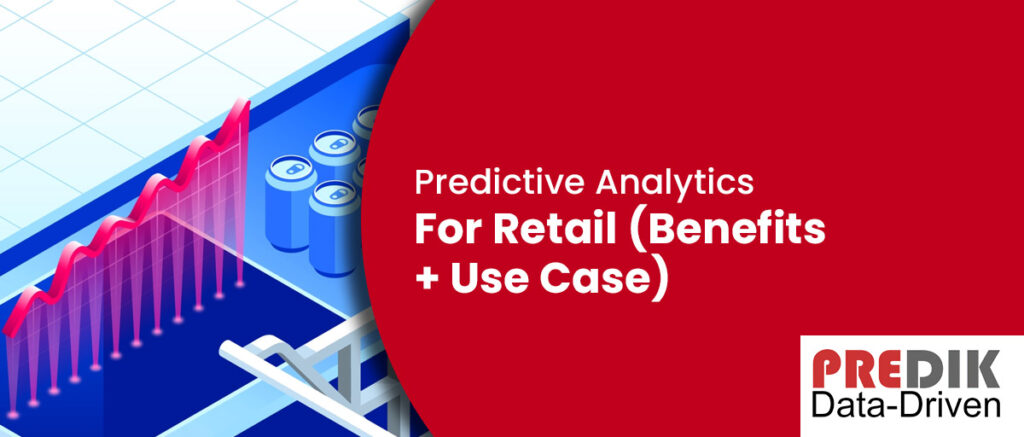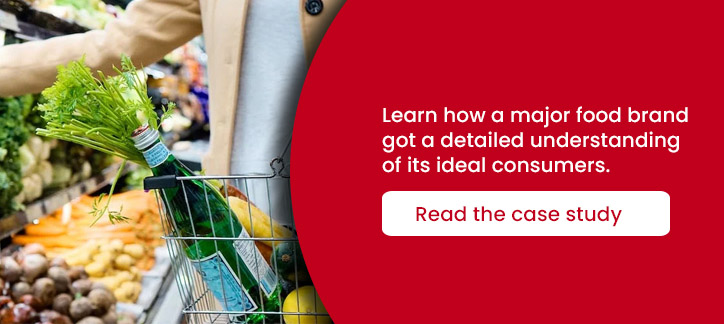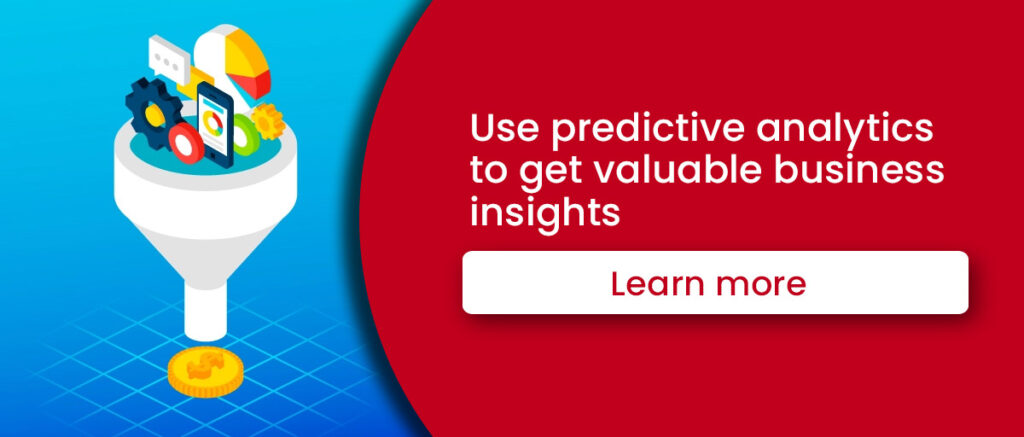Retail is constantly changing, and 2024 won’t be the exception. With the strengthening of AI and Big Data Analytics tools, this year looks more promising despite the unexpected disruptions, economic uncertainties, consuming shifts, and irregular demand for many segments in the last couple of years.
However, challenges such as inflation, slower rise on sales, increasing raw material prices, supply chain disruptions, and labor shortages will persist, posing significant obstacles for retailers and brick-and-mortar brands. In this demanding market that requires personalization, reinvention, innovation, and adaptability, it will be crucial for decision-makers to embrace change.
With the increasing acceptance of new data-driven approaches, we expect retail predictive analytics solutions to not just be tools, but potential game-changers for many brands of all sizes, offering new perspectives in an ever-evolving industry.
In this article we will cover the following topics:
What is retail predictive analytics?
Retail predictive analytics is a methodology that relies on historical data and current information from different sources to make predictions about possible outcomes and the factors that have the most impact. For instance, it has been used to accurately forecast demand during peak shopping seasons, leading to improved inventory planning and reduced stockouts.
Predictive analytics in retail also uses statistical data modeling, Machine Learning techniques, and alternative data sources to identify hidden buying patterns, potential sales opportunities, in-store improvements, and emerging consumer trends in target markets and provide retailers with a confident edge in their decision-making process.
For example, we used predictive analytics to help Boston’s Pizza find optimal locations. Our model analyzed their current POS performance and considered thousands of other variables, such as foot traffic, competition presence, and vehicle flow, to determine which aspects were a “must” every time they evaluated a new potential location.
Retail brands using predictive analytics are getting better insights regarding:
- Pricing strategies.
- Transactional and brand loyalty behavior.
- Customer segmentation.
- In-store navigation.
- Competitive intelligence.
- Sales intelligence regarding detecting and forecasting new trends, patterns, and seasonability.
Learn more: Understanding the role of Big Data in Retail Industry (With Examples)
Understanding the different types of Retail Predictive Analytics
There are different types or categories of retail analytics. Each one is useful to approach different data needs and questions. Oracle classifies retail analytics into six different categories:
Shopper-Level Analytics
This type of retail analytics is about getting to know customers. What they buy, how they shop, and how they feel about a specific brand.
Shopper-level analytics offers a unique perspective on customer behavior, whether in physical stores or online. It enables you to track how customers navigate your store, which pages they frequent on your website, and even their sentiment towards your brand. While these insights may not directly predict short-term sales, they are valuable for enhancing customer experiences, fostering loyalty, and ultimately driving long-term sales growth.
We also recommend you read: Store Location Data: Why Is It Key for Your Business in 2024
Transaction-Level Analytics
This focuses on individual purchases. When and how did a customer buy a product? This can help you measure the success of a promotion or a marketing campaign.
Transaction-level analytics allows you to analyze individual transactions in detail, going beyond just examining customers’ overall shopping behavior. Such analyses involve examining data fields such as the items purchased, the time of purchase, the acquisition channel, and the payment method used.
Retailers can measure the effectiveness of marketing campaigns or sales by tracking the timing of related purchases. For example, when combined with shopper-level data, transaction-level analysis can reveal which customers purchased after getting a special coupon.
On-Shelf Analytics
On-shelf analytics focus on how fast your items sell, competitors’ prices for identical or similar items, and substitutes. Retailers estimate an item’s contribution based on how much money it brings in compared to the opportunity cost of stocking it. It’s important to consider how items fit together strategically rather than just looking at individual items.

Location Analytics
Location analytics are crucial to perform exploratory analysis and monitor trends. This helps you understand how your stores perform across different locations or regions.
By combining location intelligence and predictive analytics solutions, you can learn more about local preferences, helping you tailor your offerings to suit local tastes.
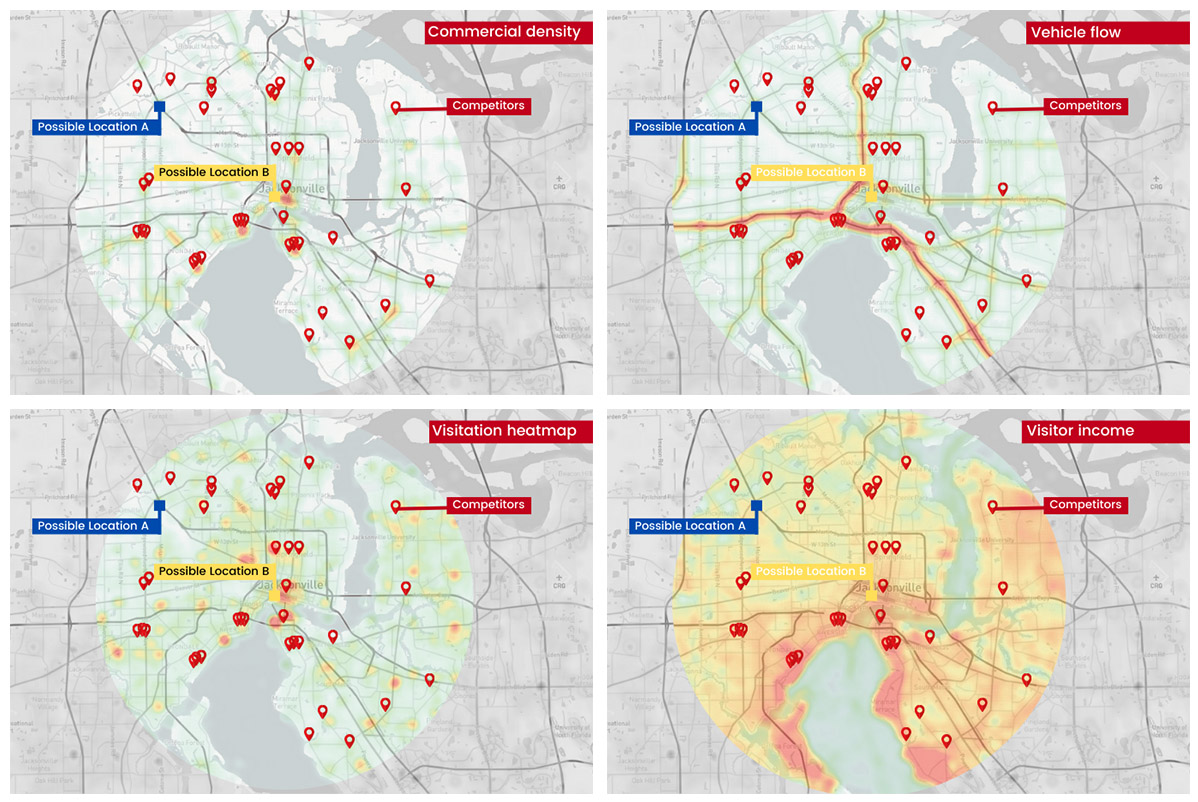
Learn more: Retail Site Selection Guide: Using Big Data For Better Strategies
Multichannel Analytics
Multichannel analytics refers to analyzing customer shopping behavior across all channels through which your product is sold. It gives your business insights into how customers interact with them and which products are better suited to specific channels.
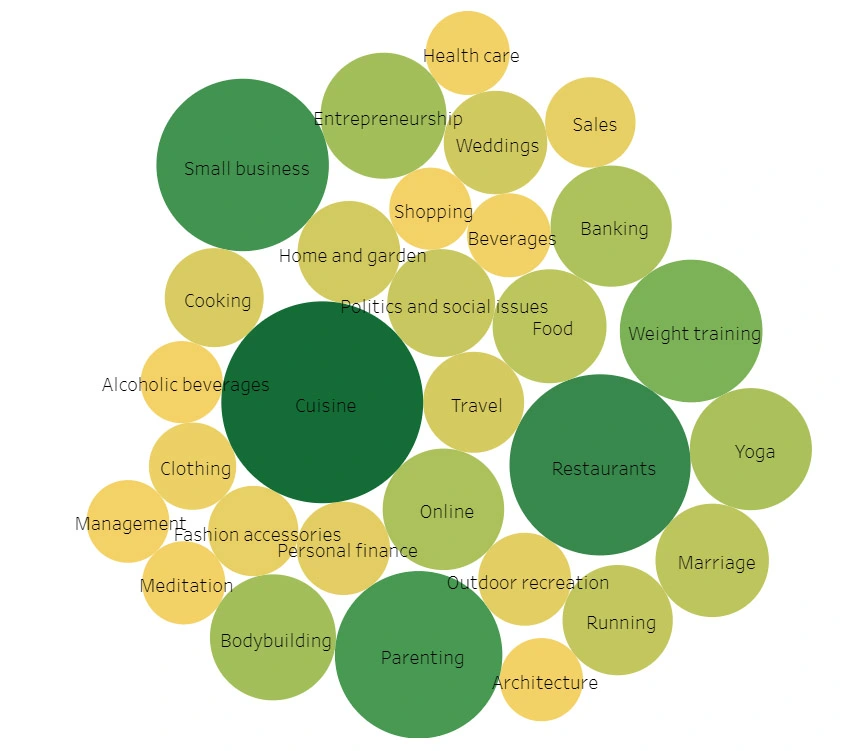
Outcome-Level Analytics
These analytics are about general results. How are sales, profits, and customer behavior changing over time? This helps you identify emerging cosumer trends, for example.
For instance, knowing when a business makes most of its money is good. For retailers, this usually happens during the holiday season or at specific moments throughout the year. Outcome-level analytics will provide specifics around these trends, allowing decision-makers to be prepared and notice aberrations earlier, hopefully in time to respond.
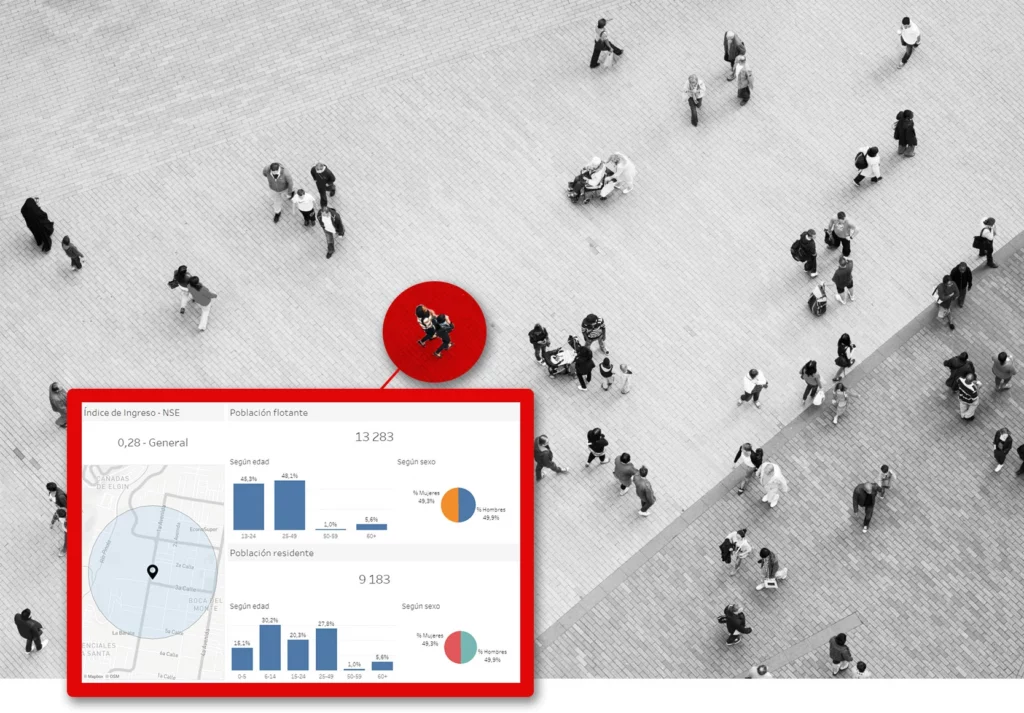
What are the benefits of predictive analytics?
The good thing about predictive analytic models is their capacity to adapt to specific business needs and objectives. Nevertheless, there are some expected benefits that most retail companies can get from predictive data:
Improved customer experience
Retail is one of the main industries where consumers expect the best customer experience. The good news is that retailers can gather customer data from different sources like online channels, website analytics, social media, sensors, transaction data, foot traffic, and POIs.
With all this information, predictive models can improve every touch point between the brand and their users, from personalized promotions, store layout, product delivery times, pricing strategies, and cross-selling activations to post-sale efforts.
Home Depot is employing predictive analytics, specifically prescriptive analytics, to battle shrinkage (loss of inventory due to waste, fraud, abuse, training, execution, or other reasons).
Home Depot, in particular, faces a challenge given its large scale, with over 2,000 retail stores and significant sales volume. Issues with shrinkage impact not only the company’s bottom line but also the customer experience, as missing SKUs due to shrinkage can lead to customers not finding what they need on shelves.
Overall, predictive analytics can help answer the question: How can I provide the best customer experience so my users become loyal to my brand?
Identify market shifts, trends, and business opportunities
Have you ever considered how much Forever21 or H&M would lose in revenue if they ran out of stock due to unexpected demand? As mentioned before, retail predictive analytics takes in consideration thousands of variables to identify market shifts regarding sales, customer journeys, or product preferences for deeper market analysis.
With this retail data, brands can identify upcoming trends and patterns, take the necessary actions, and develop robust strategies to take advantage of new business opportunities and avoid market threats.
Zara constantly uses data analytics to spot new trends within its target market. The brand uses track tags to collect data regarding:
- How frequently a piece of clothing is tried on and returned to the rack?
- How many items make it to the checkout counter?
- How quickly do they go from the shelf to the Point of Sale (POS)?
- Sales levels of each SKU from the inventory levels in each store.
In-depth product development and launch
A product launch can be expensive and time-consuming. Predictive analytics in retial are great for reducing risks by evaluating and forecasting a new product demand in a specific market or customer segment.
Retail predictive insights can even guide you into how much product you can expect to sell in a certain period. That is key to managing your production, supply chain planning, and stock levels.
Also, brands can make important decisions about the placement, promotion, and timing of a new product launch strategy by analyzing planogram and assortment data, point-of-sale transaction details, and customer loyalty intelligence.
Learn more: The Best Way to Do Market Research for a New Product Development
Better marketing campaigns
Different consumer segments exhibit distinct behaviors and patterns. Seasonal factors may persuade some, while prevailing shopping trends may impact others.
Predictive models based on retail analytics can estimate how consumer segments can behave based on specific scenarios or identify the best locations to place advertising for their OHH strategies. This is key for marketing and sales teams to develop specific, highly targeted, personalized campaigns with a higher probability of success.
Learn more: How to Get Useful Customer Behavior Analytics? (Guide)
Valuable insights for expansion strategies
To develop successful site selection and expansion strategies, retailers need to have the necessary insight. How to determine if the brand will have the expected results in a new geographic territory? How to decide where is the location for a new store? How to choose uncovered marketplaces to place a product?
Predictive models consider location-based factors to estimate ROI outcomes, sales potential and visitation volumes.
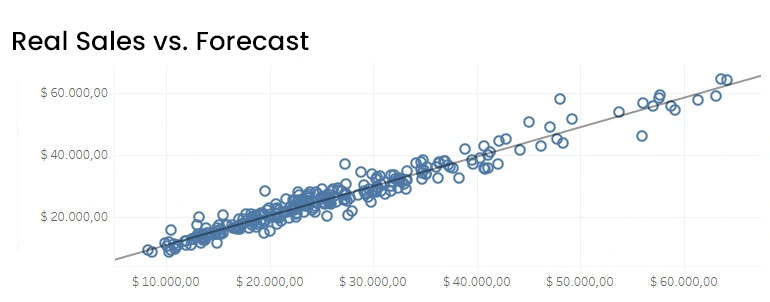
For example, suppose a brand decides to place a new store in San Francisco. In that case, the model can analyze other stores’ data, like visitor volume, sales transactions, product demand, and market share, to understand which factors determine current stores’ success and failures.
Then it will combine these insights with specific city factors like demographics, competitors, and purchasing power to identify areas with high-performance potential.
Case Study: How Walmart Uses Predictive Analytics?
Big Data Analytics has become essential to Walmart’s strategy to enhance, customize and optimize its shopping experience. These are four keys to how Walmart uses data and predictive models:
Improve store checkout: Walmart’s stores have improved their checkout process by using predictive analytics. This allows them to anticipate the busiest hours and determine how many associates are needed at the counters.
Also, by analyzing data, Walmart can decide on the best checkout options for each store, such as self-checkout.
Keep better track of its supply chain: Walmart utilizes predictive estimations to monitor their supply chain and track the “number of steps” from the dock to its stores. This enables the company to optimize routes, analyze transportation lanes, and determine the most efficient routes for its fleet of trucks.
Learn more: How To Use Predictive Analytics For Supply Chain Optimization?
Optimize product assortment: The brand analyzes customer preferences and shopping patterns to make better decisions about what products to stock and display. This helps optimize the product assortment in stores.
Personalize shopping experience: Walmart uses predictive insights to make sure product is always available. For example, the company gathers data on users shopping for baby products to forecast future demand for diapers.
Start using retail predictive analytics
At PREDIK Data-Driven, we have over 14 years of experience developing customized predictive models for the most well-known retail brands worldwide.

